Souriquois; 'men of the salted waters'
They are the first ones
We owe the forefathers and gardians of the earth, all our respect.
ARTICLE
Mi'kmaq
Mi’kmaq (Mi’kmaw, Micmac or L’nu, “the people” in Mi’kmaq) are Indigenous peoples who are among the original inhabitants in the Atlantic Provinces of Canada. Alternative names for the Mi’kmaq appear in some historical sources and include Gaspesians, Souriquois and Tarrantines. Contemporary Mi’kmaq communities are located predominantly in Nova Scotia and New Brunswick, but with a significant presence in Quebec, Newfoundland, Maine and the Boston area. In July 2022, the Mi'kmaq language was recognized as the first language of Nova Scotia.
Traditional Territory
Mi’kmaq are among the original inhabitants of the Atlantic region in Canada, and inhabited the coastal areas of Gaspé and the Maritime Provinces east of the Saint John River. This traditional territory is known as Mi’gma’gi (Mi’kma’ki) and is made up of seven districts: Unama’gi (Unama’kik), Esge’gewa’gi (Eskikewa’kik), Sugapune’gati (Sipekni’katik), Epegwitg aq Pigtug (Epekwitk aq Piktuk), Gespugwi’tg (Kespukwitk), Signigtewa’gi (Siknikt) and Gespe’gewa’gi (Kespek). Mi’kmaq people have occupied their traditional territory, Mi’gma’gi, since time immemorial. Mi’kmaq continue to occupy this area as well as settlements in Newfoundland and New England, especially Boston. Oral history and archeological evidence place the Mi’kmaq in Mi’gma’gi for more than 10,000 years. (See also Indigenous Territory).
Traditional Life
In the pre-contact world of Mi’gma’gi, oral and archeological history tells of seasonally patterned habitation and resource harvesting — spring and summer spent on the coast, fall and winter inland. The people of Mi’gma’gi relied on the variety of resources available, using everything from shellfish to sea mammals to land mammals small and large for nutrition, clothing, dwellings and tools. They also used the bountiful timber of the region to construct canoes, snowshoes and shelters, usually in combination with animal skins and sinews. The Mi’kmaq relied wholly on their surroundings for survival, and thus developed strong reverence for the environment that sustained them.
Population
Mi’gma’gi is home to 30 Mi’kmaq nations, 29 of which are located in Canada — the Aroostook Micmac Band of Presque Isle, Maine, has more than 1,200 members. All but two communities (the Qalipu Mi’kmaq First Nation and La Nation Micmac de Gespeg in Fontenelle, Québec) possess reserve lands. Many Mi’kmaq people live off-reserve, either in Mi’gma’gi or elsewhere. More still may not be included by registered population counts, as they are not recognized as status Indians under the Indian Act.
Social and Political Organization
Historically, Mi’kmaq settlements were characterized by individual or joint households scattered about a bay or along a river. Communities were related by alliance and kinship. Leadership, based on prestige rather than power, was largely concerned with effective management of the fishing and hunting economy.
Mi’kmaq share close ties with other local peoples, including the Maliseet and Passamaquoddy. With the Maliseet, Passamaquoddy, Penobscot and Abenaki peoples, the Mi’kmaq make up the Wabanaki Confederacy, a confederation of nations politically active at least from contact with Europeans to the present.
The Mi’kmaq Grand Council (Sante’ Mawio’mi) is the traditional government of the Mi’kmaq peoples, established before the arrival of Europeans. The council survives to this day, although its political powers have been restricted by federal legislation, such as the Indian Act. In the 1600s and 1700s, the council discussed political issues and entered into treaties with the British. Today, the Mi’kmaq Grand Council members advocate for the promotion and preservation of Mi’kmaq people, language and culture.
Representatives from across Mi’kmaq territory sit on the council. In the past, the Grand Chief (Kji Sagamaw or Kji Saqmaw) was the head of state for the collective Mi’kmaq political body, which consisted of captains (keptins or kji’keptan), who led the council, wampum readers (putu’s or putus), who maintained treaty and traditional laws, and soldiers (smagn’is), who protected the people. Today, the chief, captains and wampum readers still run the council, though their roles have been curtailed by the federal government to focus primarily on Mi’kmaq spirituality and culture. Other organizations, like the Mi’kmaq Rights Initiative (Kwilmu’kw Maw-klusuaqn), advocate politically for the recognition and implementation of treaty rights. (See also Treaties with Indigenous Peoples in Canada).
Culture
Like other Indigenous peoples in the Eastern Woodlands region, Mi’kmaq practised art intrinsically linked to the natural world. Contemporary Mi’kmaq artists like Alan Syliboy have reinterpreted Mi’kmaq artistic traditions, like rock painting and ornate quillwork clothing. (See also Indigenous Art in Canada).
Listen to a great & informative video on First Nation's traditions
https://youtu.be/tMAK4VqEK_M
===============================================================================
For too long and still nowadays, insufficient place is given to the ''First Nation'' factor in the make up of the ''canadian'' at large but certainly the making of the Acadian and French Canadian character and identity.
For too long, the idea that mixed blood had ''possibly'' occurred between the first Europeans and certainly, the French colonist and the Natives of Eastern Canada (and likely expanding from East to West) was perceived by some as a form of ethnic 'dissolution' of sorts, as if the original elements of a culture would be somehow impoverished if another series of genetic traits altered the initial balance of the ''in-comers''.
We can now say those were very Eurocentric views, because, visitors, "we were"! And without this remarkable welcoming attitude expressed in countless forms by the aboriginals from the 1500's on, (and perhaps even before) the destiny of this country would be altogether different and much poorer in multiple ways. We are just starting to realise these fundamentals.
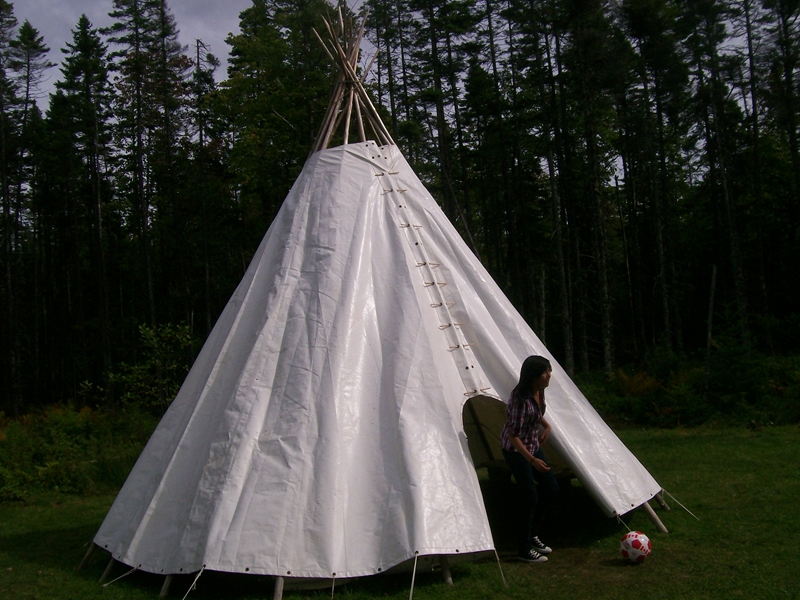
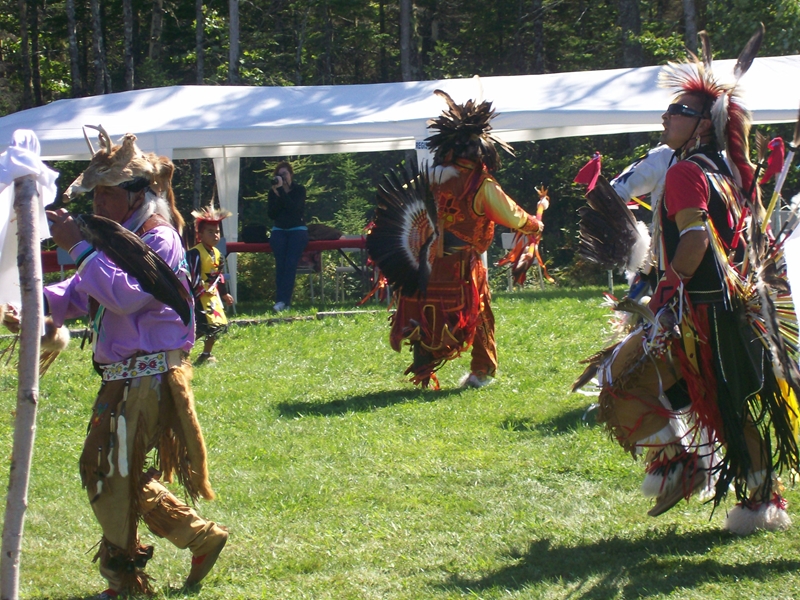
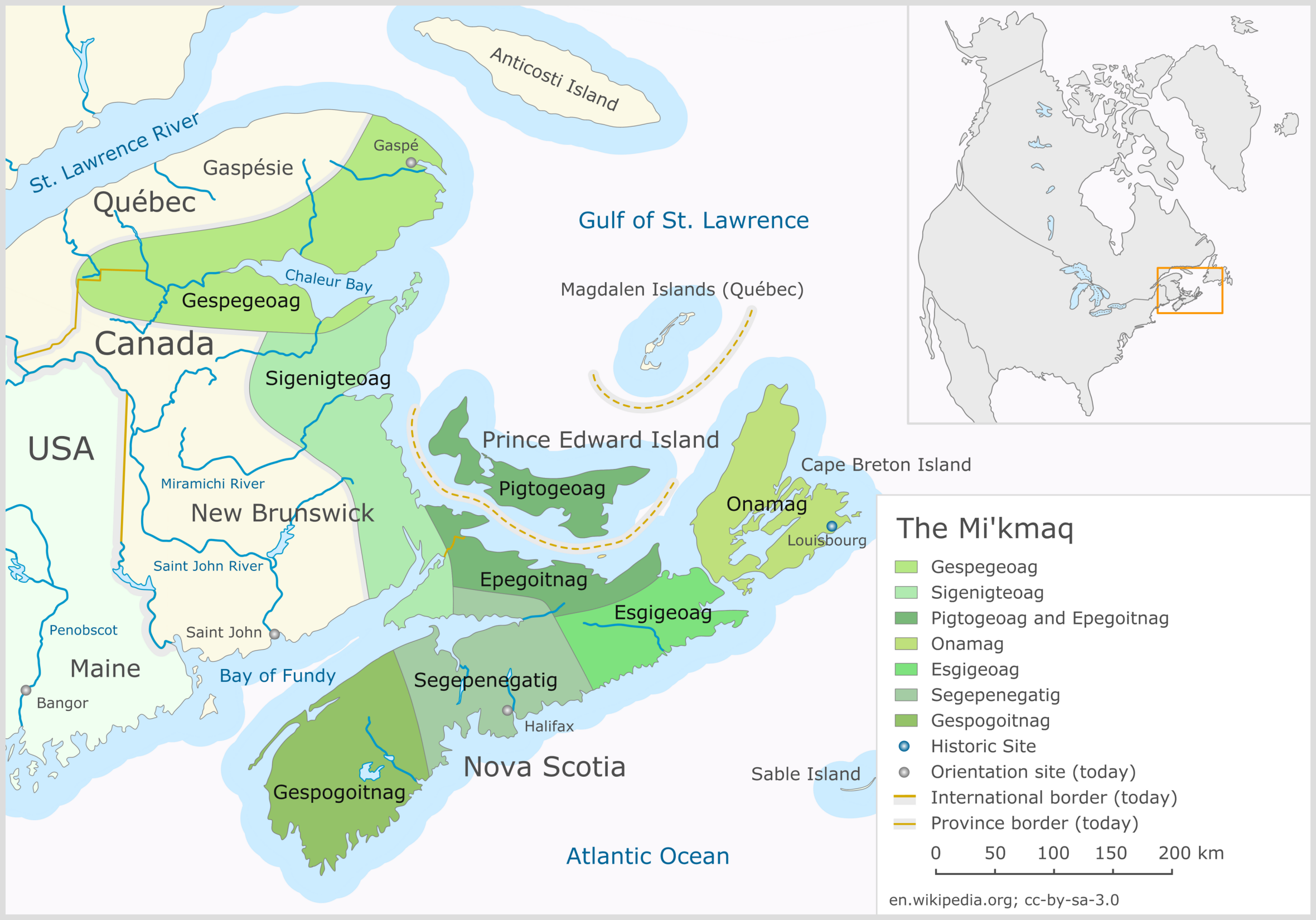
The First Nation heritage is an integral part of the cultural and natural landscape of America.
Acadie is no exception to this.
Several thousand years of physical experience and material evolution was then naturally 'transfered' to the new comers as they shared a ''new world'' and a fused destiny.
From the simplest item in our lives, to the more complex form found in and around our day-to-day environment, the First People have left their influences and their marks, if they were not the true initial conceptors of these wonderful inventions we now take for granted.
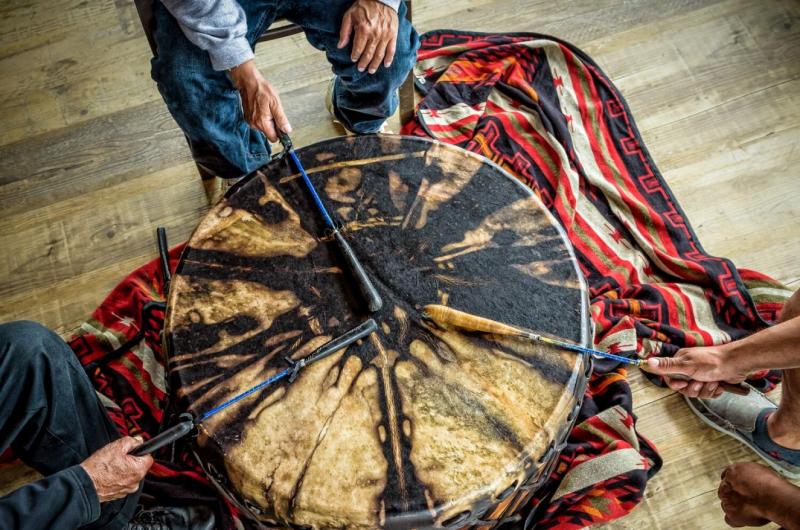
From a larger spiritual stand point, some would say, that, although, their voices are not heard as they should, they preceeded us within the grand circle of the world's nations.
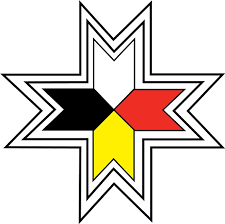
The symbolic logo associated with the Mi'kmaw, which exhibits the four colours inherent to world's population (Black, Yellow, White and Red) is a solid testimony to the unity ''to be'' and the common roots of all people of the earth.
Respectively, ''black'', from the African continent where the first humans appeared, ''yellow'' embodying the Asian essence, where the largest population exists, ''white'' associated with the caucasian trait and the ''western world'' while the ''red'' representing the First Nations, the latter, standing on guard, preserving some of the most elemental values of humans; the indisputable connection we have with the land and sea and all forms of LIFE around us and within.
...In the First Nations, to hurt one small element of this fragile and inextricable ensemble, hurts the whole in one way or other, directly or indirectly.
Novacadie Tours acknowledges these notions by conducting ecologically friendly and moraly enriching excursions of this 'unceded territorry';
It conveys these notions to its clients for a broader appreciation of the infinite beauties around us!
Song: When Two Worlds Met
By: Wanda Joudry- Finigan:
From a far and distant land you came searching
For land to claim
Your journey was rough,
Troubles were plenty
Disease and starvation
Took lives of many.
The Mi`kmaw were not shocked
By your presence
The old ones foreseen it in a vision.
You called our land a paradise
Oh.. the beauty, delighted the eyes
So different from your home in France
The people, the culture, music and dance.
That first winter here you all would have died
Had the Mi`kmaq not shown you how to survive
The friendships they formed. with one another
Remains strong today a bond like no other.
The British Army came that day
Expelled from this land. took your men away
Tears of despair.. from the women and children
But safe they were with the Mi`kmaq Nation.
Your journey has brought you home again
To live on this land with your Mi`kmaq friends
Together again, in peace and splendor
It's the tie that binds.. a bond like no other.
Ta Ho!
Sacred items from Mi'kmaq culture
 Ash Splint Baskets |
 4 Sacred Medicines |
 Eagle Feather |
 Drum |
 Peacepipe |
As I walk along the same paths that my ancestors traveled many moons ago, a sense of warmth and oneness engulfs me as a Mi'kmaq woman from Mi'kma'ki. Reflecting on days long past, the stories of what life was like for my ancestors cannot be told in books, but by 'experiencing' the story through 'our' eyes.
"Métis is one of several terms used to describe people of mixed native and European origin.
The word Métis is an old French word meaning "mixed." Other terms that have been used include mixed blood, bois brûlé, michif, and country-born.
Today the term Métis refers to a distinct group of people who have a common history and heritage."
Excerpt from text written by:
© Lucie LeBlanc Consentino
Acadian & French Canadian Ancestral Home
2005 - Present
https://en.wikipedia.org/wiki/M%C3%A9tis_people
(Canada)#Cultural_definitions
Métis in New France
"The first Métis were the children of European fishermen and native women along the Atlantic coast of Canada. In Acadia, many French men took native wives. Some villages became largely Métis. During the 17th century, both the French and the native people encouraged mixed marriages. For the native people, these marriages strengthened their bonds with their allies and trading partners. The French authorities came to oppose these unions. The church in particular was concerned that the young men preferred the freedom of life in Native country. Métis children either stayed with their native mothers or were raised in French society. The Métis population increased farther inland. Fur traders and soldiers settled around the tiny forts and fur-trade posts. These communities formed the basis of many future towns and cities, such as Sault Ste Marie, Ontario, Detroit, Michigan, and Chicago, Illinois."
==================
First Nation's spirituality and music
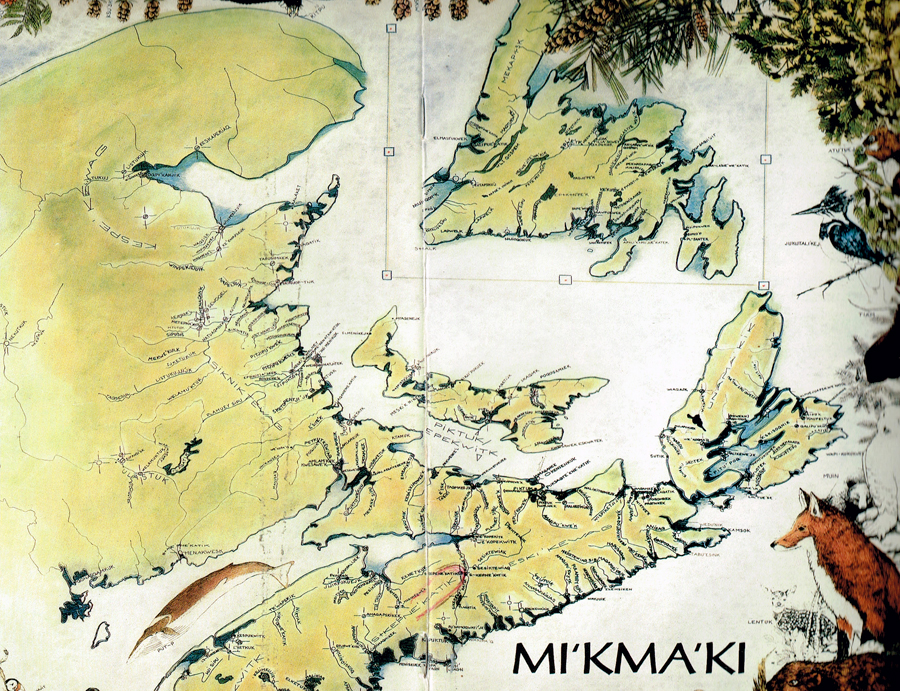

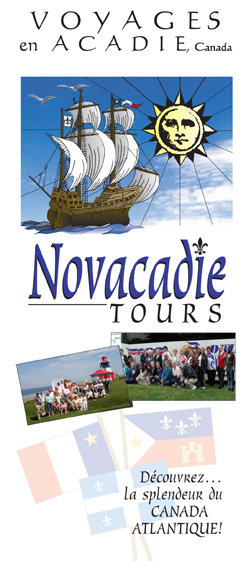

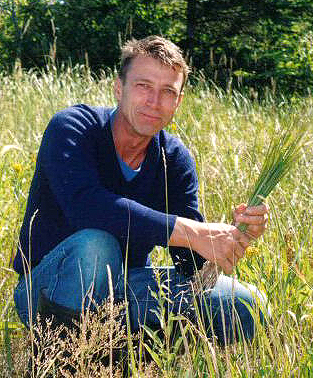
Your knowledge and adaptability added a lot to the experience. All the best!